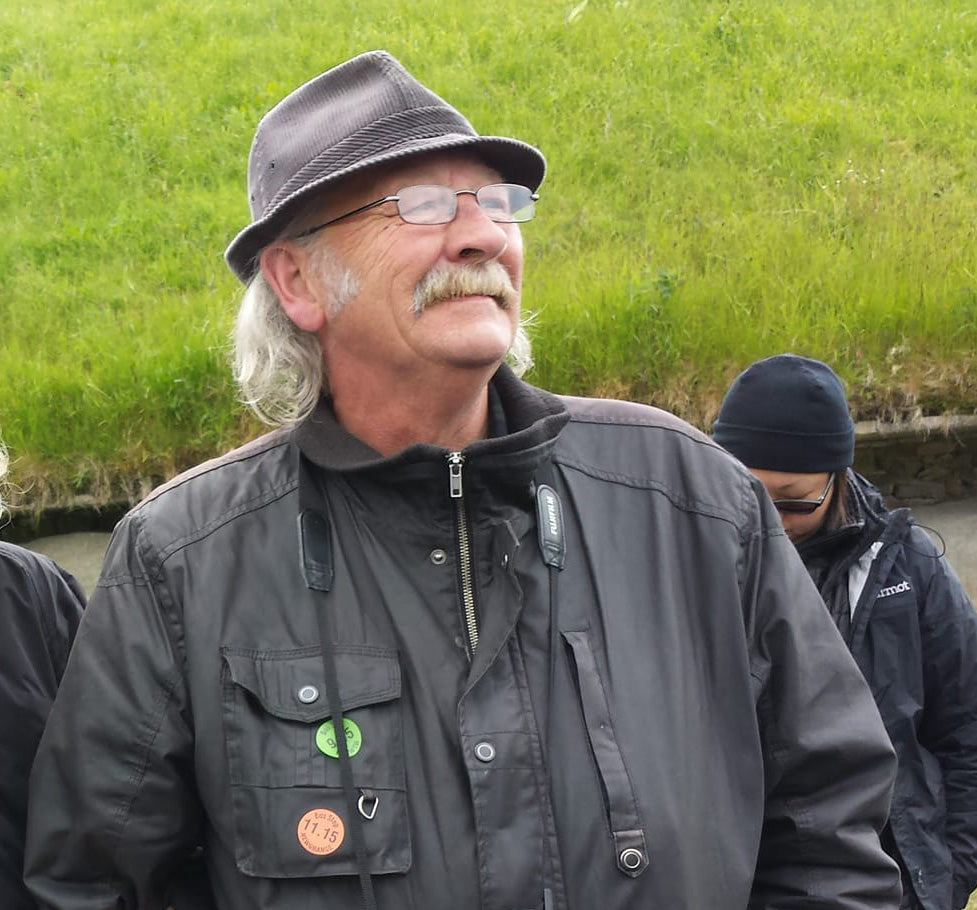
Tribute: Jack Roberts – a true pioneer of Irish megalithic research
The unexpected passing of Jack Roberts, following a short illness, has robbed us of a friend, a scholar and a pioneer. Jack passed away in the early hours of Wednesday 19th June, on the eve of the Summer Solstice, having suffered a stroke. He was 74 years of age.
The story of Jack’s legacy as one of the most illustrious non-academic scholars in the fields of megalithic monuments and prehistoric astronomy is perhaps an unusual one. He was an Englishman who arrived into Ireland almost a half-century ago, fell in love with the place and settled here. He spent periods living in counties Cork and Galway, and at some point soon after he arrived in Ireland he took a particular interest in the prehistoric stone monuments of the country – the megaliths. It was in those areas of his research and passion that he rose to relative fame among those of us who shared his incessant passion for the old stone monuments.

This is my effort to pay tribute to someone I consider to have been one of the great names in Irish megalithic scholarship, but in order to do so in a spirit of total honesty, I must first tell you about our friendship. I became aware of the work that Jack had done with the ‘Stonelight’ team, an informal moniker for a group of friends and researchers including Martin Brennan, Toby Hall and Hank Harrison among others who had contributed to the field of Irish archaeoastronomy by making several important discoveries about Neolithic astronomical alignments and a new insight into Irish megalithic art. The fruits of their research are to be found in a book that is well known to all scholars of Irish megaliths, the one first published in 1983 as The Stars and The Stones, later republished as The Stones of Time.
Not long after my own research into Neolithic astronomy began in 1999 with Drogheda artist Richard Moore, I acquired copies of Martin Brennan’s 1980 book The Boyne Valley Vision and a 1994 copy of The Stones of Time. These works, particularly the latter, provided enormous inspiration to me, and although it was penned by Martin Brennan, it is clear from reading the acknowledgements in that book that Jack Roberts was the principal ‘colleague’ from the Stonelighters, something that was later confirmed by others including Jack himself when we eventually became acquainted.
Martin Brennan had left Ireland in around 1985 under a cloud. He had been roundly criticised by several leading archaeologists and his work poorly received in the field of professional archaeology. The reasons for this are varied, but it certainly seems that an element of jealousy was involved. This group of relatively youthful upstarts, some of them American, one of them English, were not just writing about astronomical alignments (an area where there was a dearth of expertise among the archaeologists), but were making significant discoveries about solar alignments of passage-tombs, in particular their best-known revelations of the equinox sunrise alignment of Cairn T at Loughcrew and the Winter Solstice sunset alignment of Dowth’s southern chamber at Brú na Bóinne.

In the years and decades that followed the publication of The Stars and The Stones, which provided details of these discoveries, the archaeological establishment in Ireland maintained two stances – complete silence, or scathing criticism of some of the methods and findings of the Stonelight crew. For many non-specialist readers of The Stars and The Stones, Brennan, Roberts et al assumed something of a cult status. To some, they were even heroes or icons.
I found The Stars and The Stones in particular to be a refreshing and fascinating work, offering insights and speculation about the meaning of megalithic art that were in stark contrast to the staid and uninspiring catalogues of the Stone Age art contained in archaeological books, papers and other publications. This does not mean to say that the thesis advanced in The Stars and The Stones was unimpeachable, or that everything within its covers should be considered sacrosanct. Nor should it be taken to mean that the contributions of academic scholars were not valuable in their own right.

What set Roberts, Brennan and friends apart from the archaeologists was their own willingness to advance new theories on possible meanings of the art, at a time when archaeologists were roundly claiming it was entirely abstract and had no real meaning at all. (For a balanced view on the interpretation of megalithic art favouring the stance of archaeology, read this blog post).
The real reasons for Brennan’s hasty departure from Ireland (he lived in Dublin) are not definitively known to me, and it is not my place to speculate on the many rumours about same that have been in circulation over the years. What I can tell you is that in 2009, I had the seemingly crazy notion that I should try to bring Martin Brennan back to Ireland for the first time in a quarter of a century, for the purpose of speaking at a conference in his honour. The story of that adventure is quite an interesting one, but for the purpose of focusing on Jack, it will suffice to say that although Martin was to be the keynote speaker, it was important to me that Jack would also be a speaker. Months of organising (and stress) culminated in the ‘Boyne Valley Revision’ conference held at the Newgrange Lodge on Sunday 20th December 2009. It was my responsibility to collect Martin Brennan and his friend Robert Hancock from Dublin Airport when their flight arrived from the US (Martin lived in Mexico, and their journey to Ireland had involved two flights). I drove Martin and Robert to the Newgrange Lodge, where Jack Roberts and Toby Hall (another major figure in the Stonelight group) were waiting. The subsequent moments were full of joy and emotion. Toby and Jack had not seen Martin for many years and tears were shed. I did not know it then, but the conference would inspire Jack and lead to a wholehearted re-immersion into the stones.

To thank me for ‘bringing Martin home’, Jack presented me with one of his hand-made jewellery pieces and I was very grateful for the gesture. The 2009 conference gave me an opportunity to meet Jack and Toby as well as Martin, and afterwards I realised that bringing Martin back to Ireland had been hugely important, and had contributed to an atmosphere of reconciliation, or ‘burying of the hatchet’ between the Stonelighters and the archaeologists.
What only became clear a few years later was just how much that conference had reinvigorated Jack. He had begun researching again, visiting monuments, making his wonderful drawings, and he had, in fact, been busy writing a book. He reached out to me in 2013 looking for my address, and subsequently sent me a signed copy of his new book, The Sun Circles of Ireland. You can imagine my astonishment on discovering that on the third page of the book, under the heading ‘Thanks to:’ he wrote the following: ‘Anthony Murphy for starting the ball rolling.’ How had I started the ball rolling? The situation was quite the opposite as far as I was concerned. Jack and the Stonelight team had inspired me in my own research to a degree that I could not convey in words. He had, in fact, started the ball rolling years before I began applying my astronomical knowledge to Ireland’s megalithic monuments in 1999.
In September of 2013, Jack visited me at my home, and we had a long and fascinating conversation, and I also recorded an interview with him about his new book, which you can hear on the Mythical Ireland YouTube channel. In the course of our conversation that day, Jack confided in me that the Boyne Valley Revision conference had inspired him to return to his love of old monuments, which he had to an extent abandoned over the years. My impression was that Jack had been hurt by the way Martin (and by extension the whole Stonelight team) had been either ghosted or castigated by established Irish archaeologists, and that was something we discussed in our interview.
But by 2013, and it seemed for a few years previously, he had been experiencing something of a revival, and bringing Martin back to Ireland had helped him pick up his pen again to write about those subjects that, over three decades earlier, had inspired him and Martin and others to write the most fascinating book about Irish prehistory in a generation.
Months before our interview, in January of 2013, Jack had sent me a lovely email about my own book, Newgrange: Monument to Immortality, which had been published by Liffey Press in late 2012. He had bought a copy on a visit to Newgrange, and said reading it had been a highlight of his journey. In the years following 2013, Jack and I became friends. For the sake of honesty, I will admit that we were not close friends. We did not phone each other regularly, and in fact if I can tell you one thing about Jack it’s that he must not have liked email all that much because he rarely used it to communicate.
I am privileged to have been able to co-host tours of the megalithic monuments with Jack facilitated by our mutual friend and author Judith Nilan. The main facet of our friendship was a mutual admiration for each other’s’ work. Jack and his friends had inspired me on my megalithic journey, and at a time when he needed it, my efforts reciprocated that inspiration and helped (at least in part) to prompt Jack to return to the work that he loved.

He wrote several more books, including a new exposition of the mysterious Sheela-na-Gig carved statues of medieval Ireland, a subject that inspired him and interested him greatly. Although we spent time together exploring the Boyne valley monuments and those at Loughcrew. I never had the pleasure of seeing Jack among his favourite of all the prehistoric megaliths – the stone circles of counties Cork and Kerry. My understanding is that he spent many years among those circles, making observations and drawings and noting things about those monuments that other researchers and specialists had not seen.
Because he lived in Gort in County Galway, and I live in Drogheda, Co. Louth, we did not often have the opportunity to meet over the past decade. Jack was busy making and selling his jewellery at Galway and other markets, as well as researching and writing his books. At the same time, I was working, raising a family and doing my own research. When we did meet, such as when he and I both gave talks at the Bealtaine Fire Festival at Uisneach in 2018, our conversation was warm. Jack was clearly enjoying being back in the thick of megalithic research, and he was always interested to hear about me as own research and publication plans. In fact, so engrossed was he in the mysterious Sheela-na-gig carvings of Ireland, his talk at Uisneach that day ran over time, meaning that he ate into my talk time, but I didn’t mind too much. Just to share the platform with him was an honour.
Jack was purposeful and methodical. I don’t know what would have happened if I hadn’t brought Martin Brennan back to Ireland in 2009, but seeing Jack in his element at Uisneach that day sure made me glad I had done.
Jack was unconventional in some respects, and there was certainly a feeling among us who knew him that he had not been given due recognition for his work among established archaeology, but in the end that did not matter as much as people might think. Jack (and Martin and the others) had attained a particular status among a growing community of megalithic researchers and writers, and the fact that his discoveries with Martin Brennan had been either ignored by academics or had cold water poured on them resulted in an even greater interest in that work. The lack of acknowledgement of the importance of Jack and Martin’s discoveries among archaeologists was regrettable, but that fact did not ultimately negate the importance or validity of the things they had discovered. They were mavericks – ‘brash foreigners’ who had dared to venture into the field of archaeology without the accepted credentials, and who in Jack’s own words helped ‘put the light back into the monuments’.
Some of the archaeologists might not have liked their personalities or admired their methods, but my own view is that history will record that the names of Brennan and Roberts were at least equally important in the elucidation of prehistory as those of some of the foremost archaeologists of the late 20th century.
I last met Jack at the Bealtaine Fire Festival at Uisneach on 12th May this year, just six weeks ago, where we were both again sharing the speakers’ stage. He was giving a talk on Sheela-na-gigs and I was speaking about Newgrange, astronomy and mythology. He sat in the audience during my talk and I mentioned his presence, and his spoke about his importance to the story of Irish archaeoastronomy. When I finished, he came up to prepare for his talk and we shook hands and he had a warm smile. We hadn’t seen each other since before the Covid-19 pandemic, and I was delighted to see him in good form and enjoying the work that he had been doing for years. Little did I know that would be the last time I would see him alive. My great regret is that I did not ask him if we could have a photo together. It would have been a poignant one.
I am greatly saddened by his passing. We have lost a friend and a scholar, and in truth a giant. But Jack’s legacy is untainted by the scorn that was once poured on his work by those who should have known better. The fact remains that ordinary people who have a passion for the past can make significant contributions to our understanding of that past, without having a string of letters after their name. I imagine that Jack and Martin (who passed away in November 2023) are now enjoying many warm and deep conversations in the realm beyond this one, reflecting on lives that were lived in the true spirit of adventure and revelation.
In the decades and maybe even centuries to come, their names will be remembered not for the controversial reaction of archaeologists to their work, but for the genuine and brilliant contribution they made to our understanding of Irish history and prehistory. I am very glad to have met and known them both, and to have been counted among their friends.
In 2013, Judith Nilan told me that Jack had a nickname for me, which he used when referring to my work to others. He called me ‘The Druid of Drogheda’. The fact remains that I was merely the apprentice, and Jack and Martin and others were the chief druids of their era. It was an honour to have known Jack, and to have shared a great passion for Ireland’s incredible prehistoric past. His legacy is assured, and that fact brings us great comfort as we mourn his passing.
Anthony Murphy, St. John’s Eve 2024

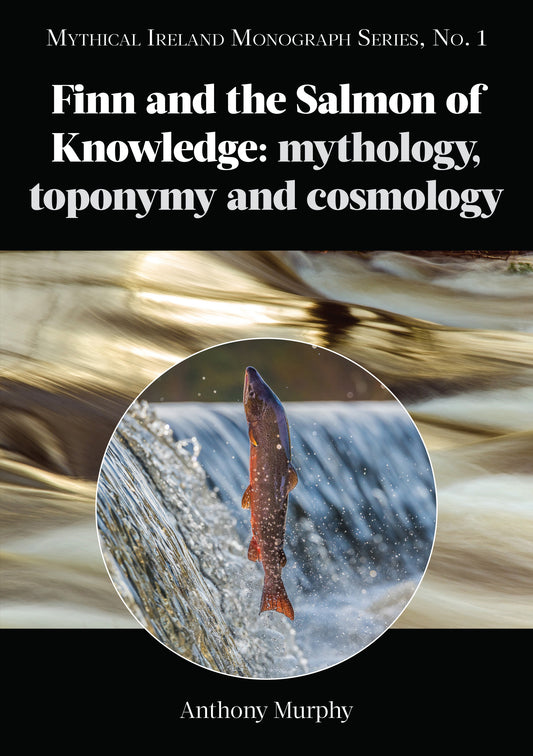
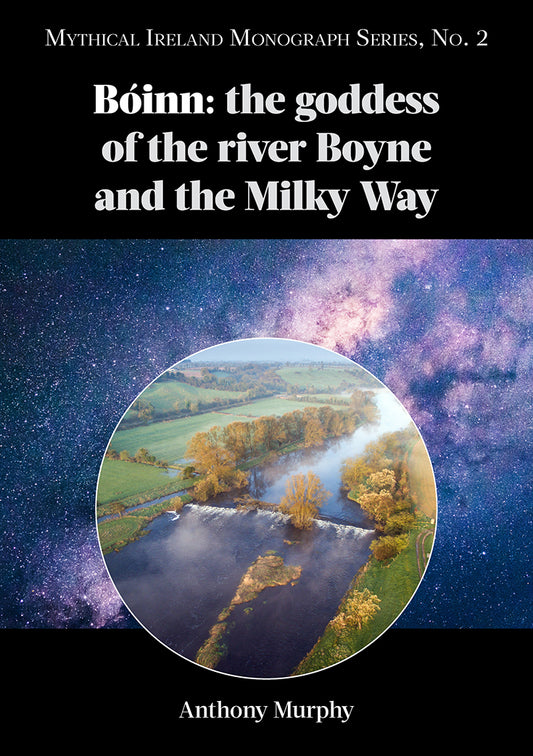
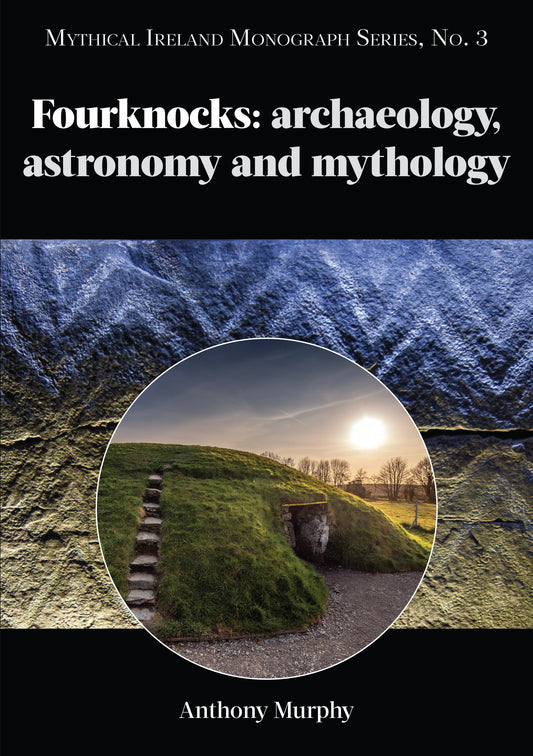
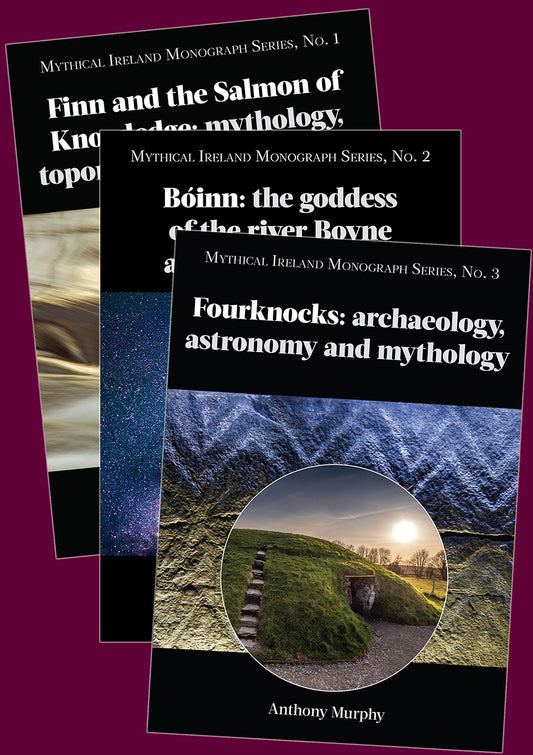
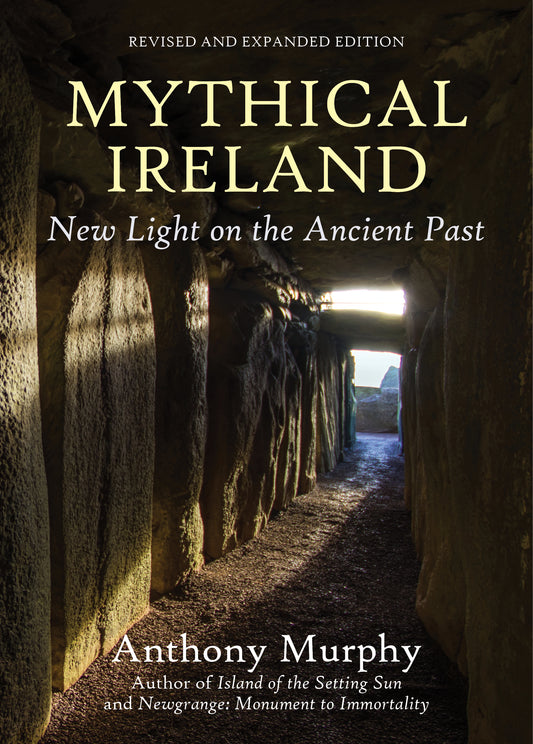
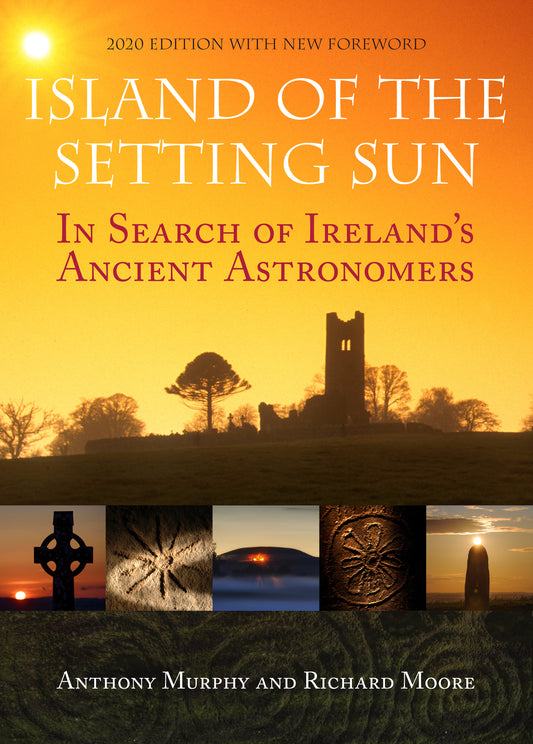
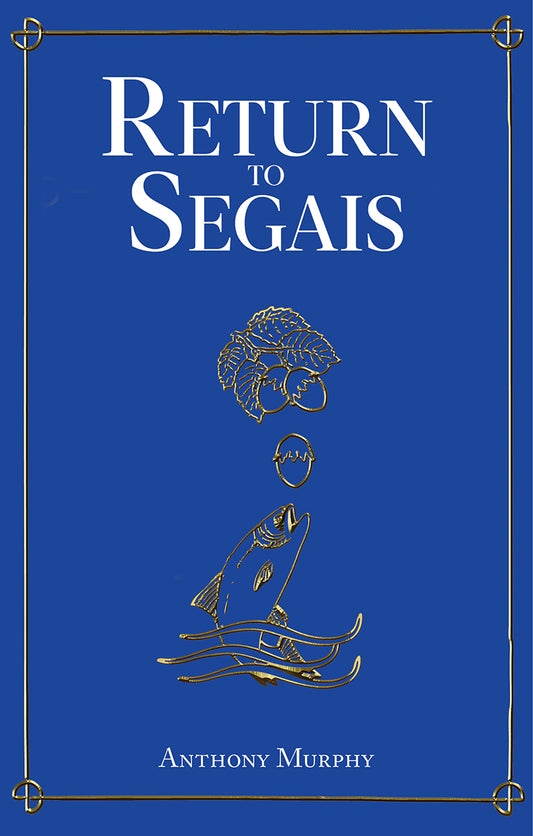
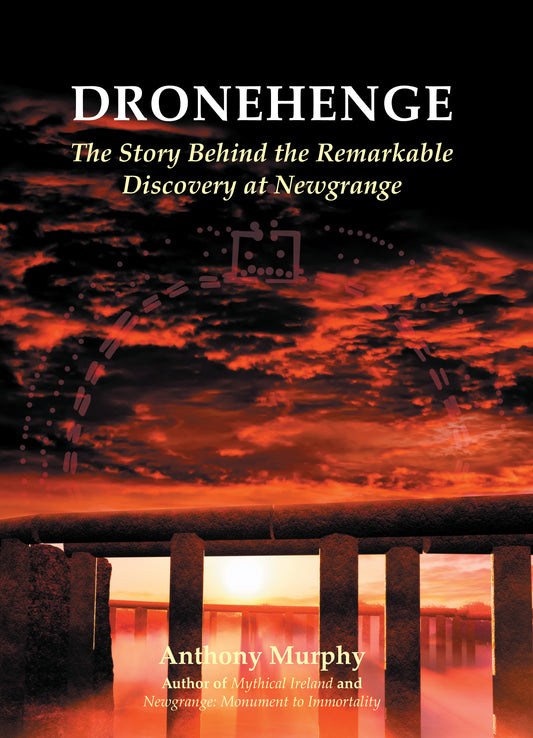
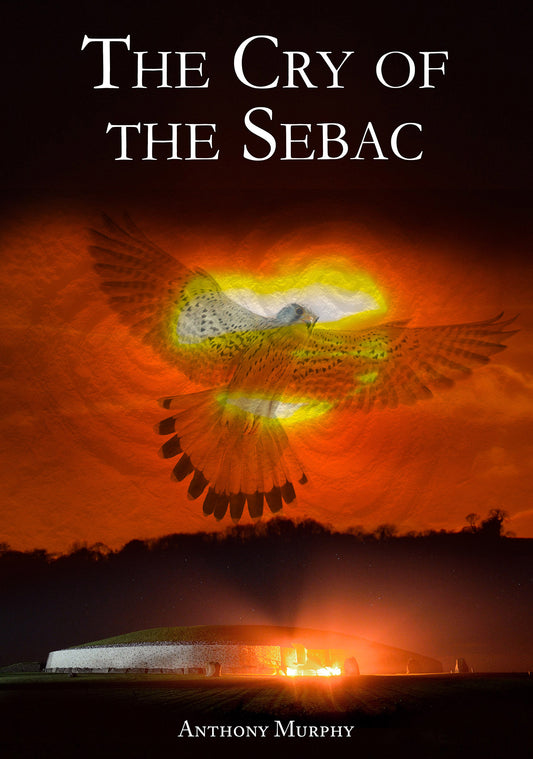
3 comments
Thank you for this wonderful tribute. We chanced upon some of Jack’s earliest booklets on our first visit to Ireland in 1996 and consequently spent our entire time seeking out stone circles and megalithic monuments using his books as a guide. This often meant traipsing through farmer’s fields with the most minimal directions. We had extraordinary adventures and our lives have not been the same since. Our several journeys to Ireland have always centered around further explorations, with Jack’s work as a touchstone. In 2023, again “by chance” or synchronicity, we took some wrong turns while seeking a particular place in County Galway and found ourselves in Kinvarra. Pulling into a parking lot to turn around, we spotted The Secret Garden and decided to visit. Finding a complete set of Jack’s books and pamphlets there, which we had a hard time finding elsewhere, we felt incredibly fortunate. Then we discovered it was Jack himself minding the store! We told him how pivotal his booklets had been to us more than 25 years earlier and that even now we used them as a reference. He was incredibly gracious, a true gentleman through-and-through, and we had a wonderful conversation. On leaving, when we said that meeting him had made our day — and thanked him for changing our lives! — he said, no, we had made his day by letting him know how much his work had meant. We were very sad to learn that he had passed but know that the magic in whose midst he must have lived now percolates through our and many lives.
Should consider putting this blog (tribute) in Archaeology Ireland. if not already done so.
👏